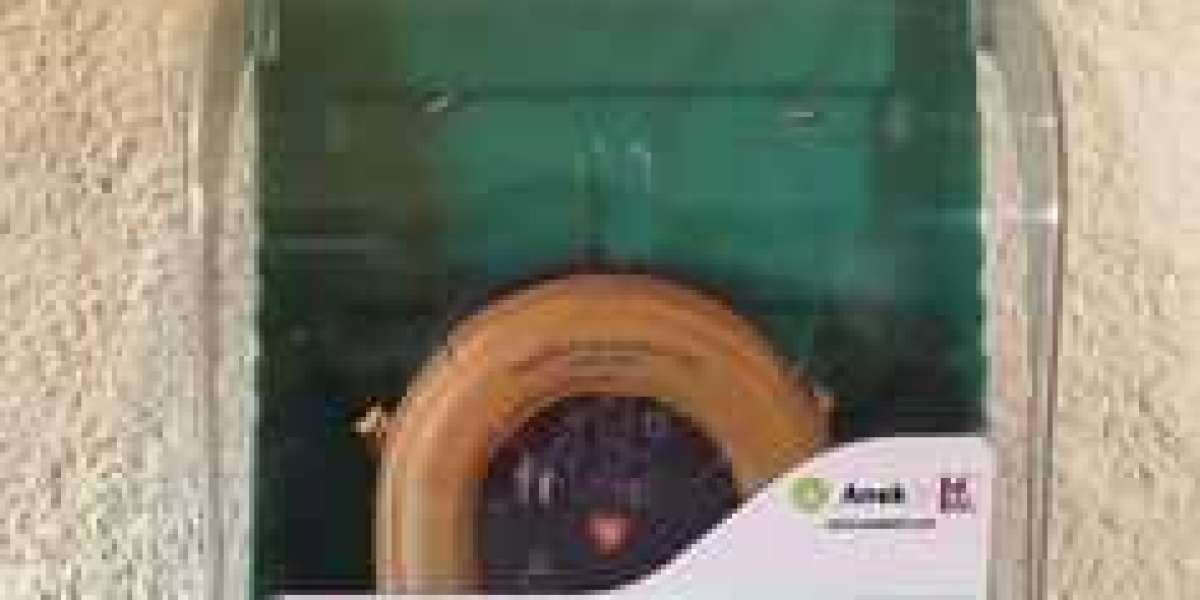Gyms, fitness centers, and health clubs are environments where individuals push their physical limits, which can increase the risk of sudden cardiac arrest (SCA). Cardiac emergencies can happen to anyone, regardless of age or fitness level, and in these cases, time is of the essence. Having an Automated External Defibrillator (AED) readily available at your gym can mean the difference between life and death. AEDs are essential life-saving devices that provide immediate intervention during a cardiac emergency, helping restore the heart’s normal rhythm before emergency services arrive.
In this guide, we’ll explore why AEDs are critical for gyms, how to choose the right AED, and the benefits of having an AED in fitness environments. By investing in an AED, gyms can not only ensure the safety of their members and staff but also demonstrate a commitment to health and well-being.
Why Gyms Need AEDs
Sudden cardiac arrest can happen without warning, and while it’s more common in individuals with underlying heart conditions, it can affect seemingly healthy people as well. This makes AEDs an indispensable part of any gym’s safety equipment. Here’s why AEDs are crucial for fitness centers:
1. Increased Risk of Cardiac Events During Exercise
Physical activity, especially high-intensity workouts, increases the heart rate and places stress on the cardiovascular system. While exercise is beneficial, it can also trigger cardiac events in individuals with undiagnosed heart conditions. Strenuous activity can lead to arrhythmias (irregular heartbeats) or cardiac arrest, which requires immediate defibrillation.
2. Time-Sensitive Treatment
In the case of SCA, every minute counts. For each minute that passes without defibrillation, the chances of survival decrease by 10%. Having an AED on-site allows gym staff or bystanders to intervene immediately, improving the likelihood of a successful resuscitation. AEDs are designed to be used by anyone, with clear voice prompts guiding the user through each step.
3. Enhanced Member Safety
Gyms have a duty of care to provide a safe environment for their members. By equipping the facility with an AED, gyms can address potential health emergencies quickly and effectively. This not only ensures member safety but also builds trust with clients, knowing that the gym is prepared for any medical emergency.
4. Compliance with Safety Regulations
In many regions, fitness centers are legally required to have AEDs on-site, especially in states or countries where AED laws mandate their presence in public places. Failing to comply with these regulations can result in penalties, making AEDs a necessary investment for gyms.
Key Features to Look for in an AED for Gyms
Choosing the right AED for a gym involves considering specific features that ensure the device will be effective in high-traffic and active environments. Here are the key features to consider:
1. Durability and Water Resistance
Gyms are high-traffic areas, and equipment is often exposed to sweat, moisture, and occasionally water in swimming pool areas. AEDs designed for durability and water resistance, such as those with IP ratings, are ideal for these environments. An IP rating of IP55 or higher indicates that the AED can withstand dust, water, and other environmental factors common in fitness centers.
2. Ease of Use
AEDs should be easy for anyone to use, regardless of their level of training. Look for devices with clear voice prompts, visual cues, and automated shock delivery. The simpler the device, the faster it can be used in an emergency.
3. Real-Time CPR Feedback
Some AEDs offer real-time CPR feedback, which helps users perform chest compressions at the correct rate and depth. CPR is critical in maintaining blood flow to vital organs while waiting for defibrillation, and real-time feedback ensures that CPR is performed effectively.
4. Pediatric Capabilities
Gyms often cater to individuals of all ages, including families with children. Ensure the AED has pediatric settings or pediatric electrode pads that allow the device to adjust the shock energy when used on children. This makes the AED versatile for treating both adults and younger patients.
5. Long Battery Life and Low Maintenance
AEDs should have long-lasting batteries and minimal maintenance requirements. Look for AEDs with a battery life of four years or more and self-check capabilities. Self-checking AEDs automatically perform diagnostics to ensure they are ready for use, reducing the burden on staff to perform manual checks.
Recommended AED Models for Gyms
Several AED models are particularly well-suited for gyms and fitness centers due to their durability, ease of use, and advanced features. Here are some top recommendations:
1. Zoll AED Plus
The Zoll AED Plus is an excellent choice for gyms, offering Real CPR Help® technology that provides real-time feedback on chest compressions. It guides users with visual and audio prompts, ensuring high-quality CPR is performed.
Key Features:
- Real CPR Help® with real-time feedback
- Water-resistant with an IP55 rating
- Easy-to-follow instructions for untrained users
- Long-lasting battery (up to 5 years)
2. Philips HeartStart OnSite AED
The Philips HeartStart OnSite AED is one of the most user-friendly models, designed for public access and non-professional users. It delivers clear voice instructions and provides fast shock delivery, making it ideal for gym environments where immediate intervention is critical.
Key Features:
- Lightweight and portable (3.3 lbs)
- Easy-to-use with voice guidance
- Pediatric pads available for child rescue
- Long-life battery and low maintenance
3. Cardiac Science Powerheart G5
The Cardiac Science Powerheart G5 AED offers fully automatic shock delivery and real-time CPR feedback. This model is perfect for gyms that want a device requiring minimal user intervention. It delivers variable energy shocks based on the patient’s needs.
Key Features:
- Fully automatic shock delivery
- CPR feedback for effective resuscitation
- Pediatric capability with optional child pads
- Rugged and durable design for high-traffic areas
4. Physio-Control LIFEPAK CR2
The Physio-Control LIFEPAK CR2 AED is known for its advanced technology, including Wi-Fi connectivity for remote monitoring and real-time CPR coaching. It’s an excellent choice for gyms looking for a high-tech solution with added features like faster shock delivery.
Key Features:
- Wi-Fi connectivity for remote device monitoring
- Real-time CPR coaching
- Pediatric mode with one-button activation
- Sleek design and lightweight
How to Implement an AED Program in Your Gym
Purchasing an AED is only the first step in creating a safe gym environment. To ensure the AED is effective, gyms should implement a comprehensive AED program that includes staff training, maintenance protocols, and proper placement of the device.
1. Staff Training
Although AEDs are designed to be used by anyone, training your staff ensures they can respond confidently and quickly during an emergency. Many AED providers offer on-site training or online courses to teach employees how to operate the AED and perform CPR.
2. Regular Maintenance
To ensure your AED is always ready for use, establish a maintenance schedule that includes checking the battery, electrode pads, and device functionality. Most AEDs perform automatic self-tests, but it’s important to inspect the device regularly and replace any expired components.
3. Proper Placement
Place your AED in an easily accessible location where it can be reached quickly in an emergency. Ideal locations in gyms include the reception area, near the main workout area, in the locker room, and by the swimming pool if applicable. Ensure that the AED is stored in a clearly marked, well-lit area with signage indicating its location.
4. Develop an Emergency Action Plan
Create an emergency action plan (EAP) that outlines the steps to take in the event of a cardiac emergency. This should include who is responsible for retrieving and using the AED, performing CPR, and contacting emergency medical services. Make sure all staff members are familiar with the EAP and know their roles.
Benefits of Having an AED in Your Gym
1. Improved Member Safety
The primary benefit of having an AED on-site is the immediate access to life-saving technology. With an AED in your gym, you can intervene quickly in the event of a cardiac emergency, potentially saving a life.
2. Increased Member Confidence
Members will feel safer knowing that your gym is equipped with the necessary tools to handle medical emergencies. This level of preparedness can increase trust and satisfaction among members, demonstrating your gym’s commitment to health and safety.
3. Compliance with Legal Requirements
In many regions, gyms and fitness centers are required to have AEDs on-site. By investing in an AED, your gym can comply with local safety regulations and avoid potential legal issues or penalties.
4. Enhanced Reputation
Having an AED in your gym not only increases safety but also enhances your reputation as a responsible, safety-conscious facility. This can be a selling point for prospective members who prioritize their health and well-being.
Conclusion
Equipping your gym with an AED is one of the most important safety measures you can take. AEDs are critical tools in the fight against sudden cardiac arrest, providing life-saving defibrillation when every second counts. By investing in an AED, such as the Zoll AED Plus, Philips HeartStart OnSite AED, or Cardiac Science Powerheart G5, gyms can ensure that they are prepared for any cardiac emergency.








